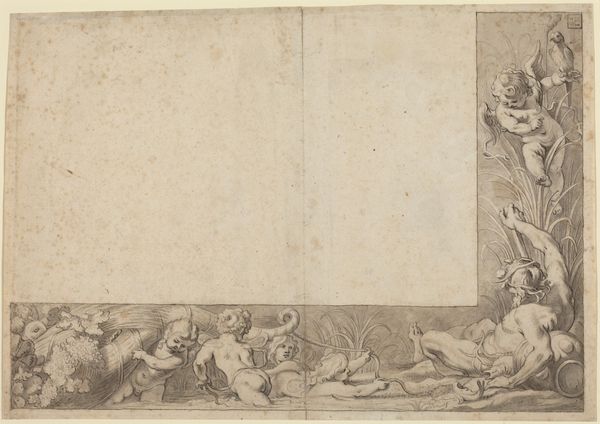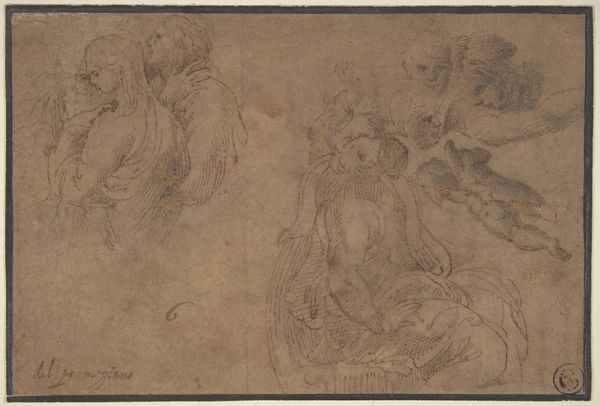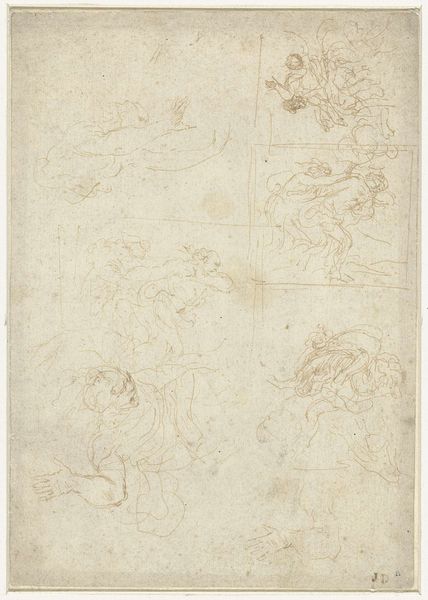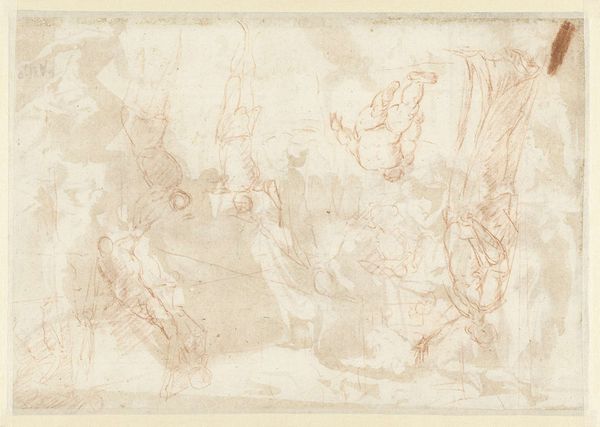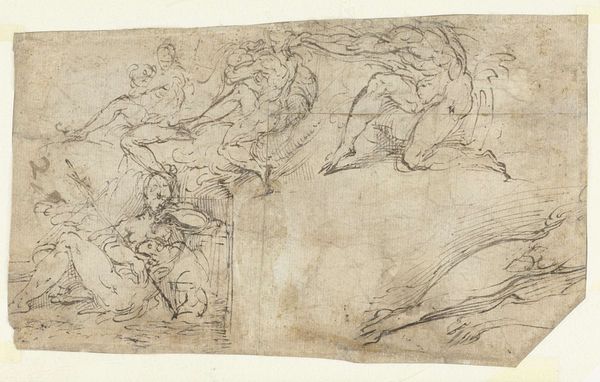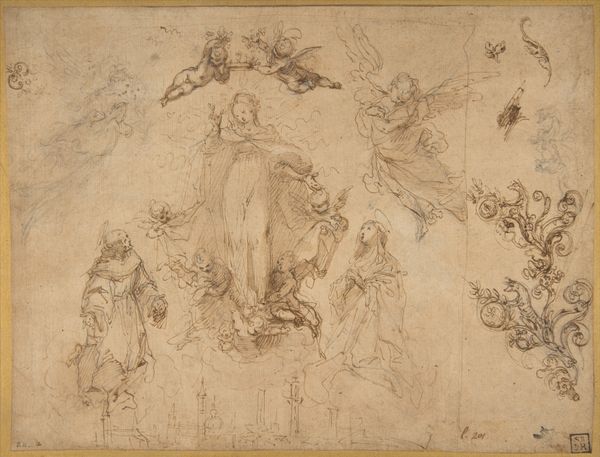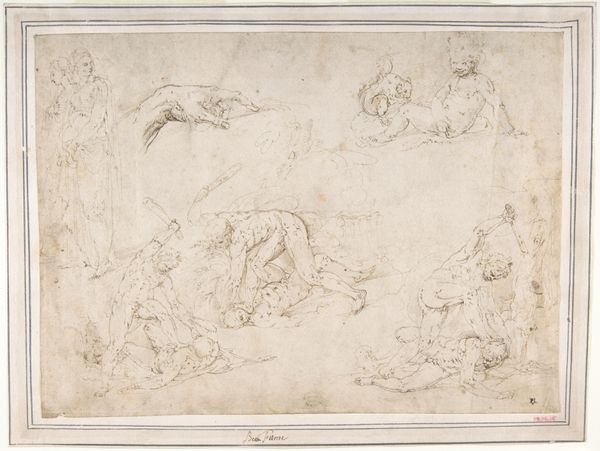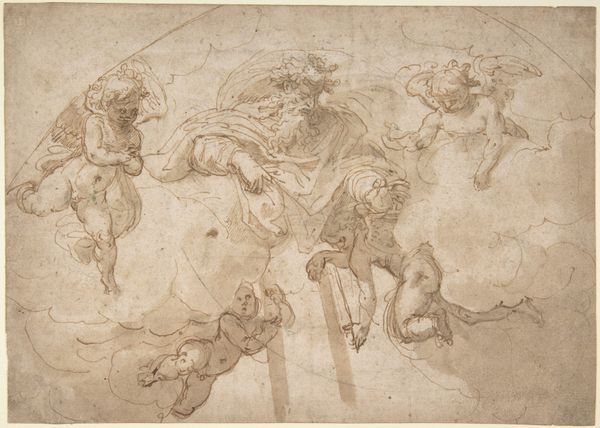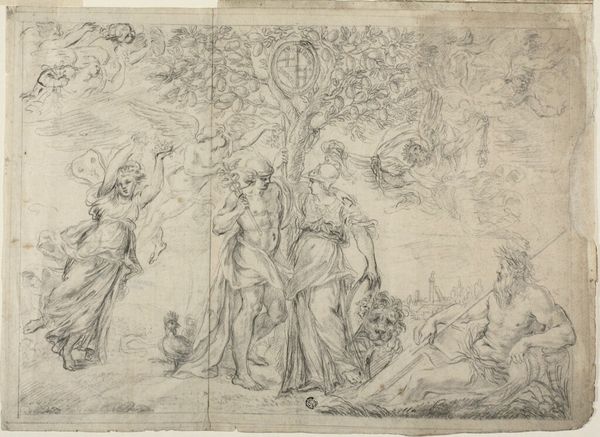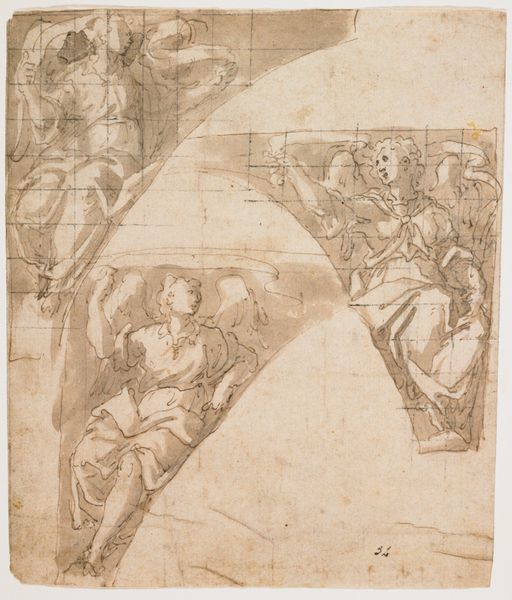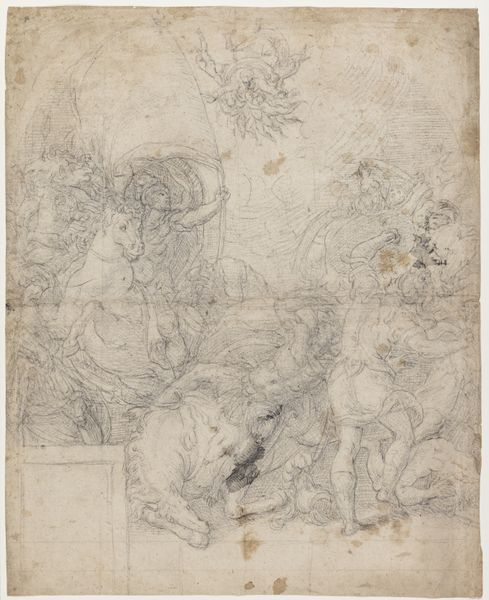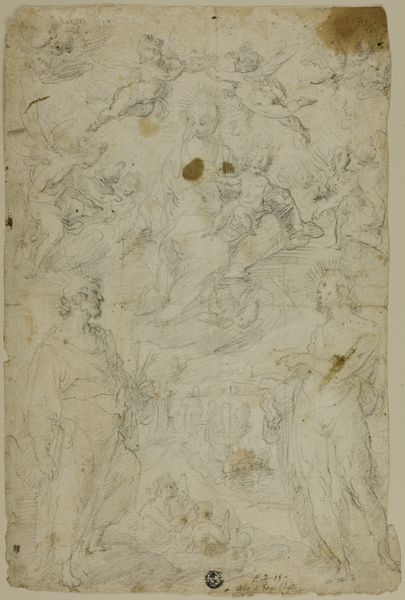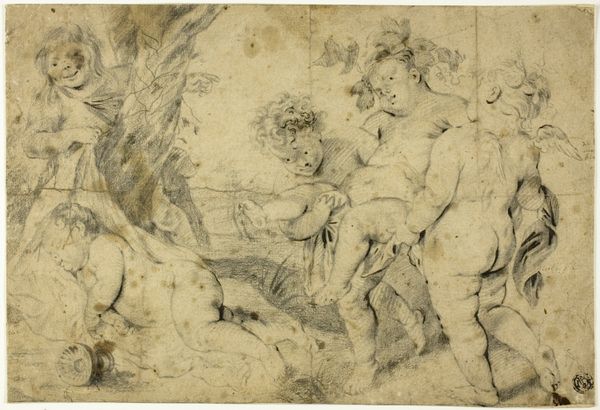
drawing, paper, pencil
#
portrait
#
drawing
#
pencil sketch
#
figuration
#
paper
#
11_renaissance
#
pencil
#
italian-renaissance
#
watercolor
Dimensions: height 190 mm, height 201 mm, width 295 mm, width 299 mm
Copyright: Rijks Museum: Open Domain
Curator: I'm struck by the intimate quality of this sketch; it feels like we're intruding on a private moment of artistic exploration. Editor: Indeed. Here we have "Motieven", an Italian Renaissance drawing from the 16th century, currently held at the Rijksmuseum. Crafted using pencil and potentially watercolor on paper, its creator remains anonymous, leaving us to decipher its meaning through the language of its time. Curator: My initial reaction is one of serenity, almost a quiet reverence. Despite the somewhat unfinished nature, the figures evoke a sense of grace and power, particularly in the depiction of the seated male figure. The composition on the right seems almost to convey chaos even as they embody grace. Editor: Absolutely. Notice how the figures and motifs presented connect to earlier iconic examples that established classical cultural memory. Take, for example, the prominence of mythological allusions represented in the male figure or even the Madonna and Child towards the bottom right corner which directly borrows from prominent Renaissance art's fixation on biblical depictions that center on humanism. How do these visual devices build a case for the period’s obsession with reclaiming classical ideals? Curator: It’s fascinating how the artist has rendered these archetypes not as static symbols, but as living forms caught in fleeting moments. The loose pencil strokes convey a sense of dynamism, while the delicate shading gives them depth and dimension. What does the social landscape of the time tell us? Editor: During this era, depictions of male forms in artistic settings like this drawing served as instruments in promoting not only the male figure, but the concept of Western cultural and societal superiority. In an artistic field dominated by men, there are social factors present here. This artwork reflects the Renaissance-era conventions and politics by the power structure that privileges that dominance. The emphasis of such social politics becomes an argument within society itself on social issues in play here. Curator: It certainly provokes thoughts about the relationship between art and social status. The Renaissance truly reveled in visually and metaphorically recreating cultural tropes, didn't it? It reminds me of that period's overall artistic project: an elaborate and often contradictory effort of meaning-making and re-presentation of culture. Editor: This sketch provides an enriching example of how those themes worked with cultural conventions during that era, making it quite thought-provoking. Curator: It’s given me new angles on both this piece and its place in the wider context.
Comments
No comments
Be the first to comment and join the conversation on the ultimate creative platform.
